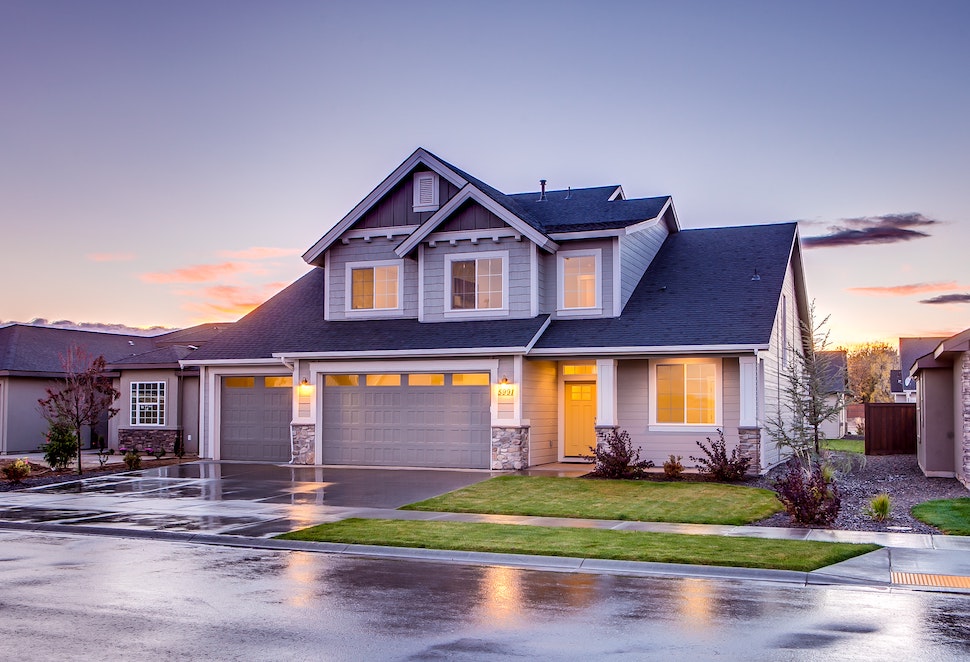How Often Should You Replace Your Roof and Why is it Important?
October 22, 2021
Don’t overlook your roof! This important structure affects more than curb appeal. It’s responsible for protecting many structures and systems.

The parts of a home that get the most attention tend to be visual, and more or less at eye level: paint color, landscaping, porches, and decks. The roof is the one part of the home that doesn’t tend to get a lot of notice unless the gutters overflow or an enthusiastically tossed toy goes a little too high.
This important structure affects a lot more than your house’s curb appeal – it’s responsible for protecting interior structures from water, ensuring your HVAC system operates efficiently, safeguarding your loved ones in dangerous weather, and, in some cases, making your attic safe storage space.
Roof Age and Replacement Tips
How long does a roof last? Sales pitches for roofing companies can come fast and furious, inviting doubt to creep in over the integrity of the shingles overhead.
Here’s a short intro guide on the various types of roof materials, and when you may want to consider repair, replacement, or maintenance:
Asphalt Shingles
Typically black with a gravel-like surface texture, asphalt shingles are the most common type of domestic home roof material in America. With proper care and upkeep, this type of roof will offer between 15 to 30 years of viable service before you’ll need to replace them entirely. Because of the nature of its overlapping construction, it’s also relatively easy to swap out or replace broken or damaged shingles.
Composition Shingles
Made from a wider variety of materials in a multilayer design that can include fiberglass, composition shingles have a slightly shorter lifespan, between 12 and 20 years before replacement is necessary. Like asphalt shingles, they may become damaged or lost periodically due to weather and exposure but can be replaced as needed.
Wooden Shingles
This type of roofing – as the name suggests – is made out of wood, often cedar for passive pest control, but also woods like cypress, pine, or redwood. This natural material is hardy and offers between 20 and 25 years of use before you will need to replace your wooden roof. While rot and pest-resistant woods and coatings are used, this type of roof material can be vulnerable to problems like moisture, mosses, mildew, and insects.
Metal Roofs
Metal roofs are durable and industrial, offering between 50 and 75 years of dedicated protection, on average. Because of their overlapping design and potential corrosion, these types of roof coverings are susceptible to leaks, so care must be taken to maintain and assess them regularly, usually bi-annually unless specific issues crop up. If they become dented or warped (think storm-fallen limbs), they can be expensive to repair or replace.
Rubber Roofs
A rarity in domestic neighborhoods and typically the domain of industrial buildings, rubber roofs last between 30 and 50 years before a full replacement is called for. Over time, particularly in hot, sunny, or damp climates, this roofing material may shrink and pull back at its seams, causing issues with peeling and leaks from moisture buildup and pooling.
Do I Need to Replace My Roof?
If you know when your roof was installed and the material falls within the normal lifespan, likely not unless you’re experiencing specific issues. That being said, if you are nearing the end of that lifespan or an in-place warranty is due to expire, it’s a smart move to schedule a full roof assessment.
In addition to regular visual inspections as you walk around your house or in your attic, it’s best to have a roofing company inspect, repair, and maintain your roof at least every other year. If your home is in an area with extreme weather or a great deal of direct sunlight and high temperatures, an annual checkup is an even better idea.